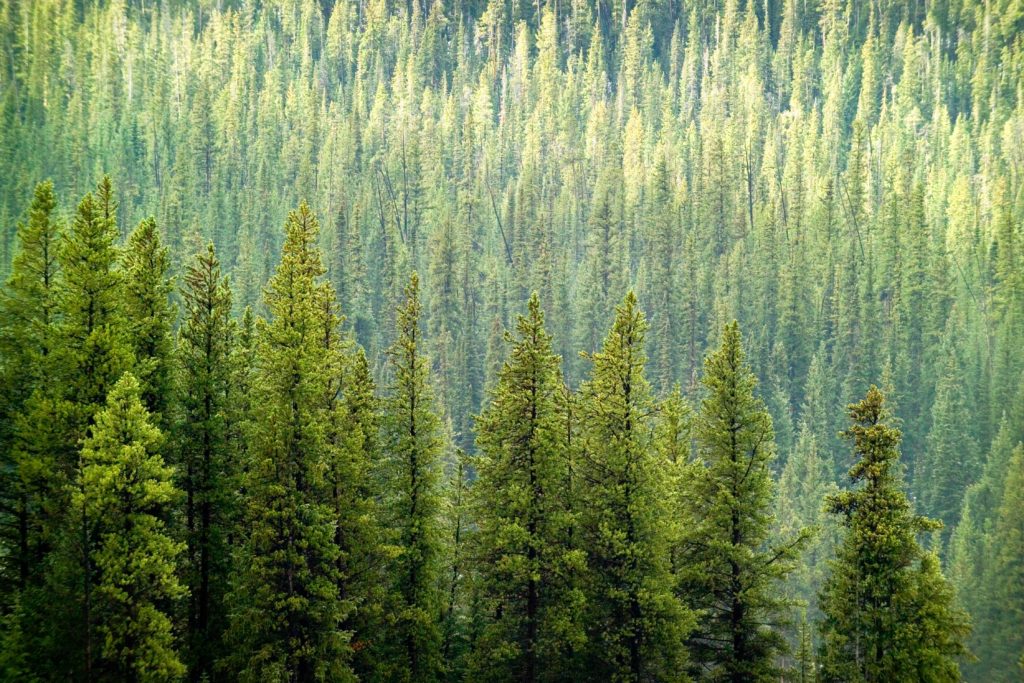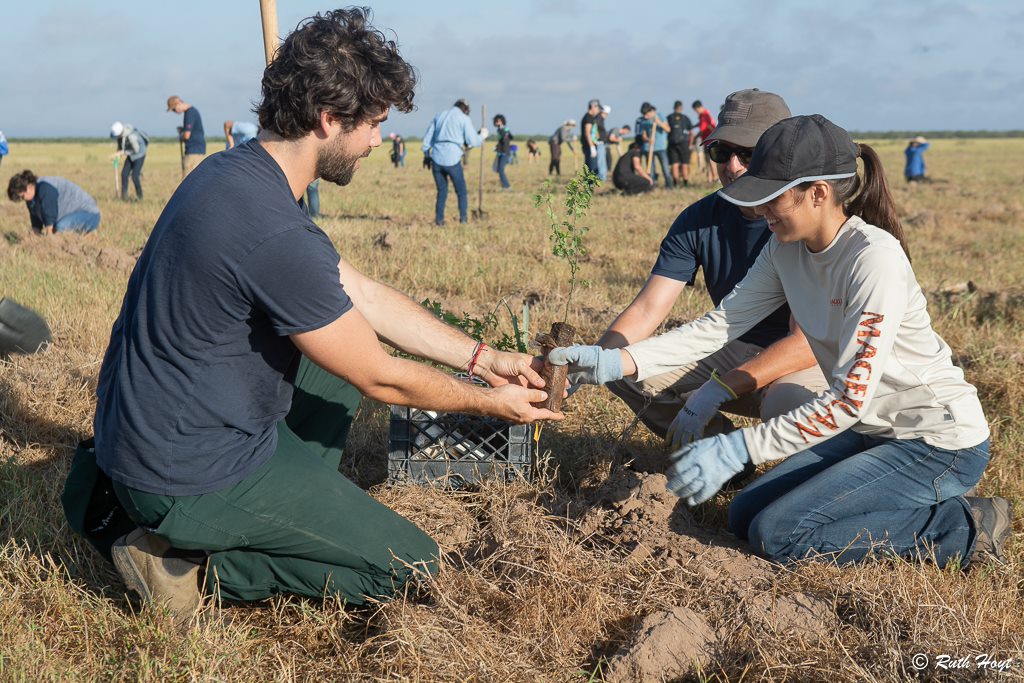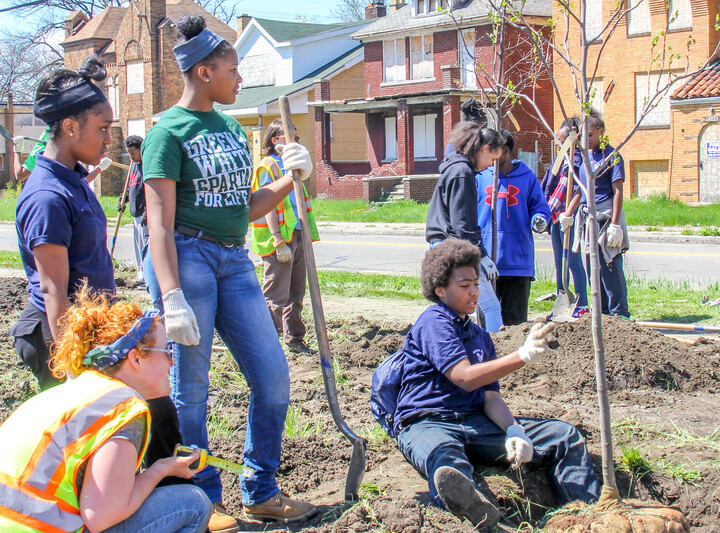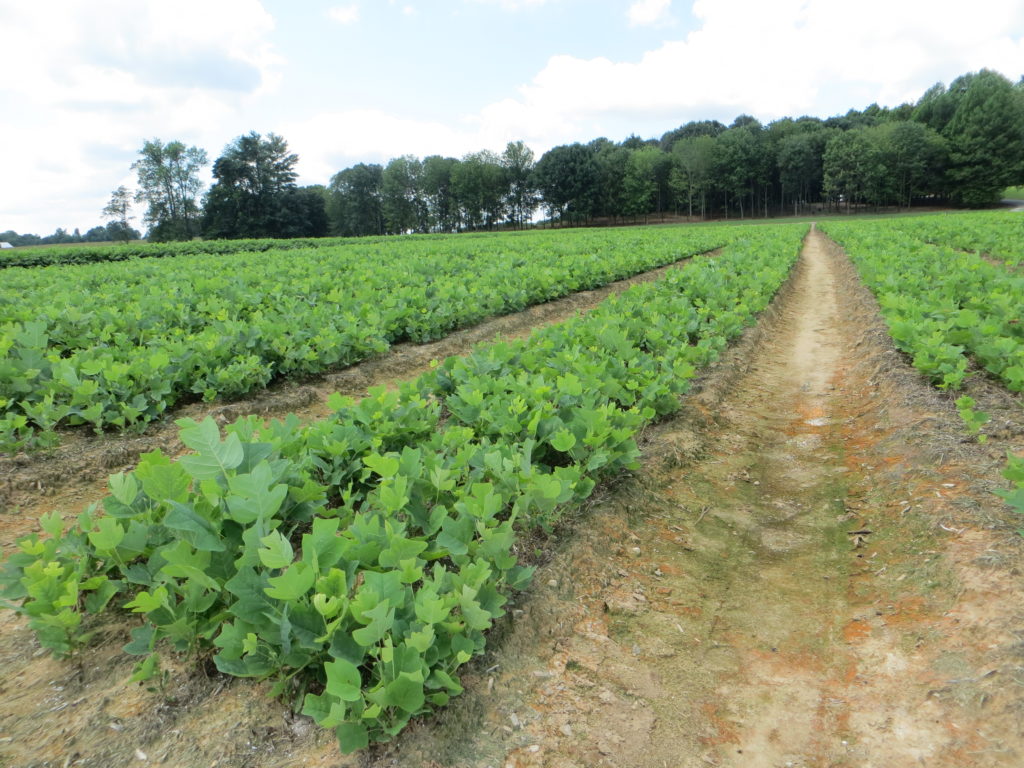
You never know when a casual conversation over lunch is going to change your life, nor can you appreciate just how much these life-changing moments will shape your future. These pivotal events only become obvious with the passage of time and the perspective it provides.
In college, I knew I wanted to spend my career working in forests, but like many college students, I struggled to put my finger on exactly what I wanted to do. I knew that I was interested in a job where I could focus primarily on protecting and managing our nation’s beautiful forests, having developed an affinity for the woods during summers at Girl Scout camp. Just before my senior year, my summer job supervisor suggested to me over lunch that I might like working in a tree nursery. Little did I know then that I would spend the next 30 years working with nurseries and seedlings. I often tell people, “if a tree is taller than I am, it’s out of my jurisdiction!”
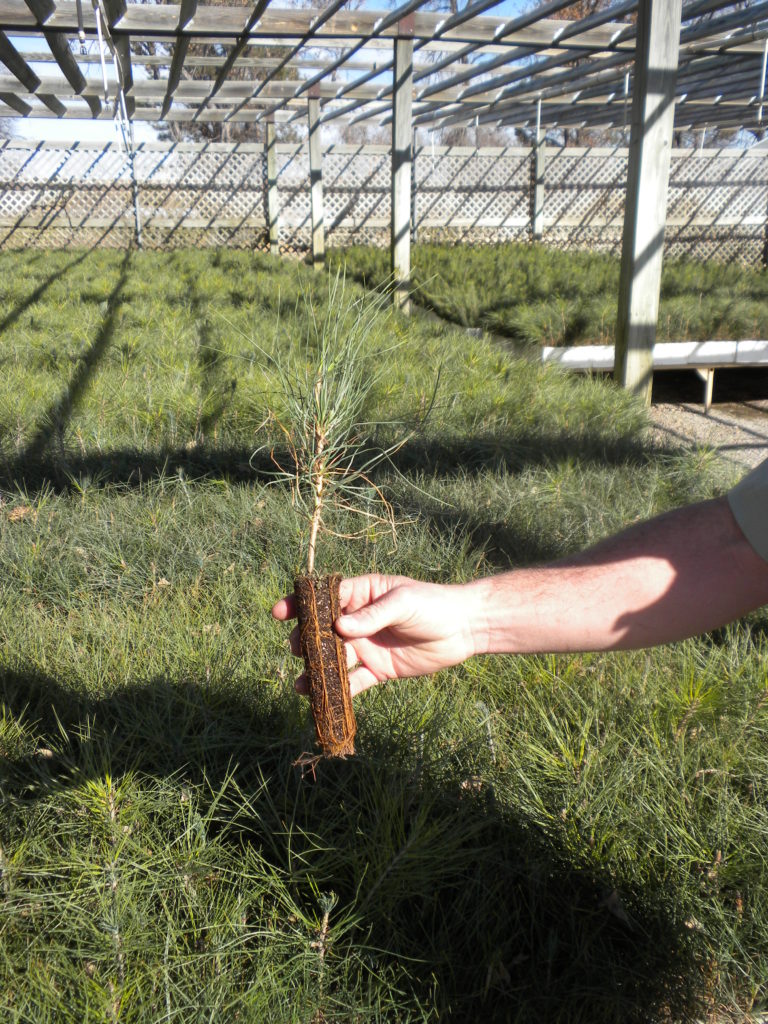
When walking through a beautiful, mature forest, it is sometimes easy to forget that every single one of those trees began as a tiny seedling. In their youth, tree seedlings are just as vulnerable as newborn babies. They need to be grown from high-quality seed, cultivated with care, and protected from pests and pathogens. Tree nurseries, and the workers who plant and maintain tree seedlings, help ensure that tree seedlings get a good start in life.
The need for tree nurseries and skilled workers has been heightened by a recent surge in interest around reforestation. Americans are increasingly recognizing the myriad benefits provided by healthy forests. Trees help prevent soil erosion and improve water quality. They provide habitat for wildlife and spaces for outdoor recreation. They support good-paying jobs and produce wood products. Efforts to address climate change have led to growing recognition of forests’ potential to sequester large amounts of carbon. This growing appreciation for the role of trees in maintaining healthy ecosystems and economies has led to calls for planting billions of new trees on formerly forested lands.
Even as demand for tree seedlings rises, however, these efforts are limited by a capacity to produce and plant them. Many state and federal nurseries have closed in recent decades, leading to a reduction in seedling availability, especially for small forest landowners. This gradual decline of U.S. nursery capacity has left us ill-equipped to respond to the call to reforest America.
A new study by The Nature Conservancy, the U.S. Forest Service, American Forests, universities, and businesses outlines the sobering challenges we face in meeting the ambition to reforest our lands. Not only do we need to increase nursery production, but we need to expand seed collection and storage, and increase our capacity to plant seedlings in the field and care for them during their first few years after planting. In other words, every aspect of the “reforestation pipeline” must be functional at the necessary capacity to meet reforestation goals.
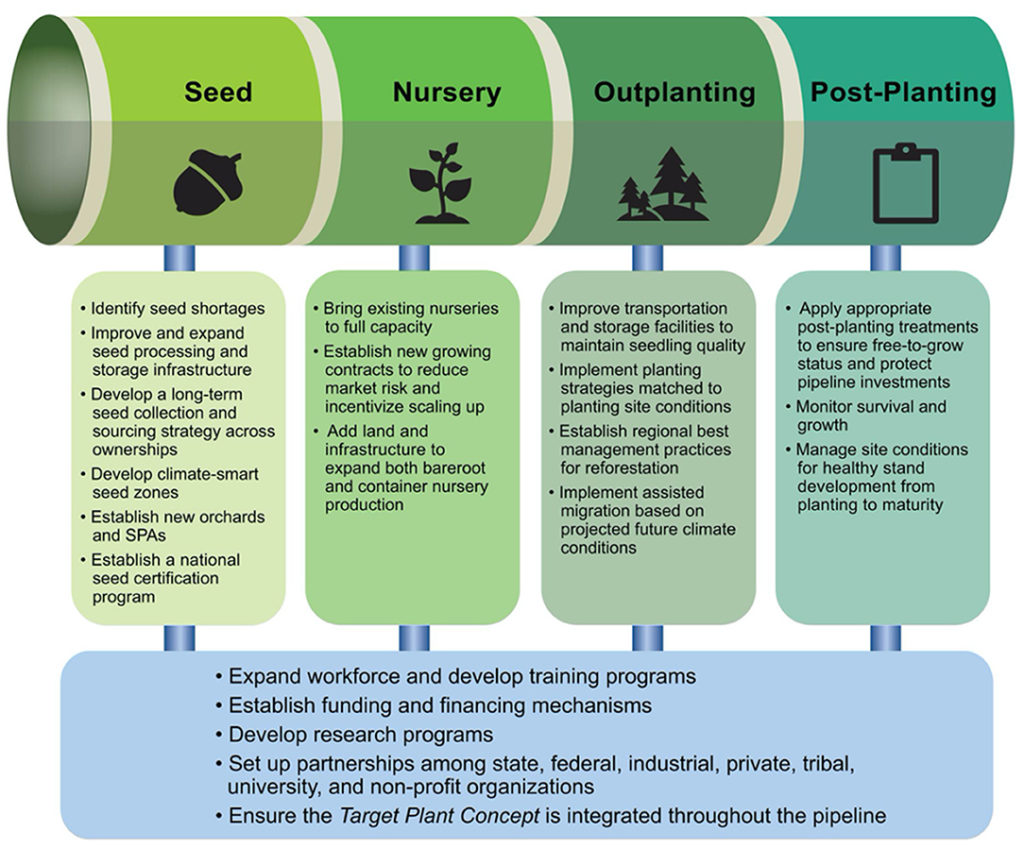
To reforest 64 million acres of U.S. land by 2040, we need to produce at least 3 billion seedlings a year – far exceeding the 1.3 billion seedlings currently produced by U.S. nurseries. Increasing nursery capacity could mean incentivizing existing nurseries to expand, or encouraging them to form innovative partnerships with other types of nurseries to utilize excess capacity.
We also need to make sure we’re planting the right trees in the right places. To do so, we need to collect and store seeds from a diversity of forest species and geographic locations to ensure we have the appropriate species and genetic sources for the range of reforestation sites across the country. Trees must be genetically adapted to the climate where they are planted – trees adapted to coastal environments have little chance to thrive in harsher mountainous areas even if they are the same species. These steps help safeguard our ecosystems and increase the chance that trees survive and thrive until maturity.
Planting 3 billion trees each year – and providing the care needed to ensure they survive – is going to require skilled forest workers. Recruitment, job training, and grant programs can help us build the national workforce we need to collect seeds, staff nurseries, plant trees, and shepherd them through the growing process.
Popular tree planting campaigns often understate the complexity of growing a tree and ensuring its survival. A successful national tree planting strategy will require a massive effort to identify land appropriate for tree planting, increase nursery capacity, produce high-quality seedlings and develop a modern “tree army” of skilled workers. It will also require strong partnerships between government agencies, non-profit organizations, businesses, and private landowners.
Thirty years ago, I made the fateful decision to pursue a career working with nurseries, and I have never regretted it. Our efforts to reforest our country are at a similar crossroads. If we take steps now to build an integrated and smoothly functioning “reforestation pipeline,” future Americans may look back at 2021 as a pivotal inflection point in our efforts to create a more robustly forested America.
Diane L. Haase is the Western Nursery Specialist at the USDA Forest Service.

